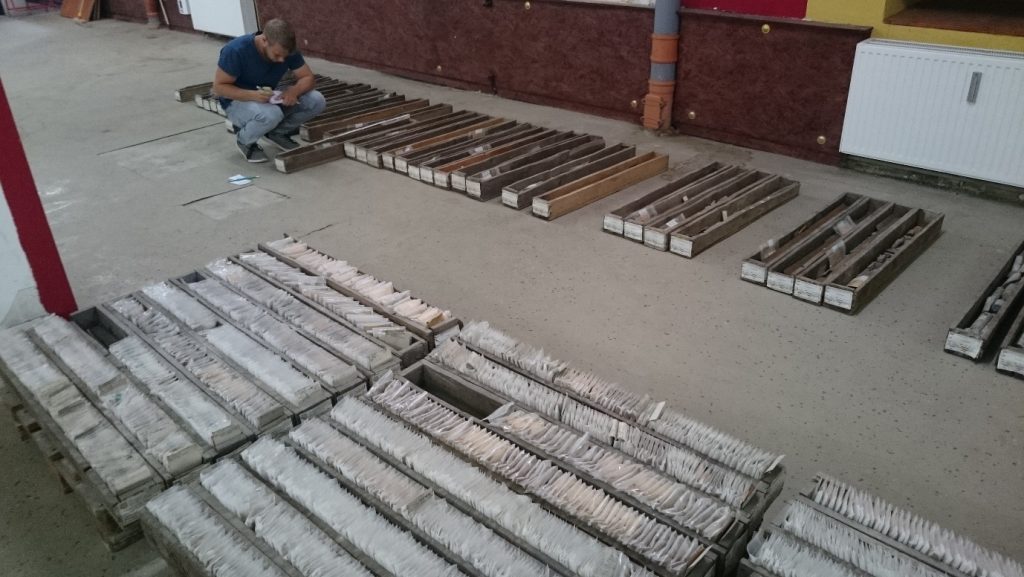A maiden lithium Mineral Resource estimate has been completed for the Sadisdorf tin-tungsten project, located in Saxony, Germany. There, Perth-based lithium explorer and processing technology developer Lithium Australia NL (LIT) is farming into a joint venture with Tin International.
- Maiden lithium Inferred Mineral Resource estimate of 25 Mt @ 0.45 % Li2O announced
- LIT’s wholly owned SiLeach® hydrometallurgical process suited to unlocking the lithium value of historical tin deposits such as those at Sadisdorf
- Sadisdorf ideally located to supply the European battery and electric vehicle market.
Consultant CSA Global has estimated an Inferred Mineral Resource of 25 Mt grading 0.45% Li2O, based on re-analysis and re-interpretation of historical drilling and underground sampling at Sadisdorf. Reporting in accordance with JORC 2012.
This result substantially enhances the potential for progressing the historical Sadisdorf tintungsten
mine to a polymetallic deposit with value contributions from lithium, tin and tungsten, as well as potentially from a range of by-products (e.g. potassium sulphate fertiliser, sodium silicate) made available by virtue of LIT’s novel SiLeach hydrometallurgical technology.
The historic Sadisdorf tin mine is characterised by greisens (altered granites) known to contain abundant lithium mineralisation in the form of zinnwaldite, a lithium mica ideally suited to processing with LIT’s 100%-owned SiLeach process.
Sadisdorf JV partner Tin International AG, previously defined a JORC (2012) tin Mineral Resource (3.36 Mt Inferred Mineral Resource grading 0.44% Sn at a cutoff of 0.25% Sn).
Quantitative X-ray diffraction (QXRD) analysis has shown quantities of lithium-bearing zinnwaldite mica ranging from 9% (average of outer greisen zone) to 12.5% (average of inner greisen zone) with local values in the inner greisen zone of up to 38% zinnwaldite. Zinnwaldite, a lithium mica, can be very easily processed using SiLeach®, making this a prime target for the supply of lithium into the European battery industry.
Preliminary SiLeach test work on the Sadisdorf outer greisen material returned encouraging results, with lithium leach extractions of zinnwaldite concentrates from Sadisdorf greisen mineralisation averaging 95%. Sadisdorf greisen sample Lithium head grade (ppm) Li2O equivalent head grade (%) Lithium SiLeach extraction (%) Greisen 1 2,510 0.54 96.8 Greisen 2 2,250 0.48 97.4 Greisen 3 1,400 0.30 91.0 Average 2,053 0.44 95.0
Lithium Australia’s Managing Director Adrian Griffin commented: “Our previous testing demonstrates that SiLeach can unlock the potential of Sadisdorf as a true polymetallic operation, recovering lithium from the residues of conventional tin concentration processes. The size of the Sadisdorf resource is already significant, with the potential to feed a 25,000 t/y lithium carbonate plant for 10 years. Further exploration is likely to expand the resource significantly. It is noteworthy that Sadisdorf has similar grades to those of the nearby Cinovec deposit (Czech Republic) and is not far from the Zinnwald deposit of Deutsche Lithium. All of these deposits have similar characteristics, making them difficult, if not impossible, to commercialise using conventional lithium processing technology – SiLeach provides the solution.
“We are in the backyard of the most rapidly expanding consumption of lithium outside China, with most European vehicle manufacturers announcing their plans to go electric. The synergies are obvious, and at Lithium Australia we are well placed to take advantage of that expanding market.”











